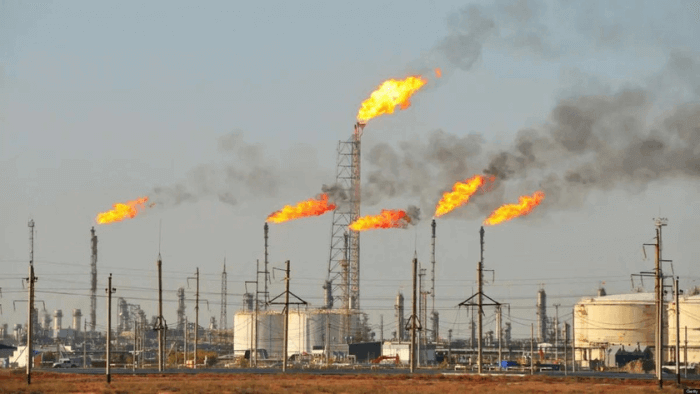For decades, the night skies in oil-producing regions have been illuminated by the eerie glow of gas flares, spewing toxic fumes and wasting valuable resources.
Despite numerous deadlines and international agreements, gas flaring continues unabated, leaving a trail of environmental damage, lost revenue, and broken promises, according to the Nigeria Gas Flare Tracker, a satellite-based technology, created by the National Oil Spill Detection and Response Agency (NOSDRA).
A gas flare, also called a flare stack, or flare boom, is a combustion device used in petroleum refineries, chemical plants, natural gas processing plants, oil or gas extraction sites with oil wells, gas wells, offshore oil and gas rigs, and landfills.
Despite numerous pledges and deadlines, gas flaring remains a persistent issue, leaving communities choked by smoke and the world grappling with its environmental consequences.
Here is a timeline of Nigeria’s unfulfilled promises to end gas flaring:
1969- General Yakubu Gowon directed oil companies to acquire resources and technologies to facilitate the use of associated gas in five years but the companies failed.
1979- The Associated Gas Reinjection Act was introduced, to prohibit the flaring of Associated Gas (AG) without the permission in writing of the Minister. It also ensures that defaulters forfeit concessions granted in the field where gas is flared, and the repair or restoration of reservoirs in the field.
1983- General Muhammadu Buhari set another ultimatum to end gas flaring with stringent penalties for non-compliance, but the oil companies failed to comply with the excuse of the high cost of re-injecting gas.
1984- Another date was fixed by the same regime, but there was no compliance due to an alleged flaw in the Act which required companies to get a paid licence from the minister to flare gas.
2003- Olusegun Obasanjo, former president of Nigeria, set another deadline to end gas flaring in Nigeria; it was also met with non-compliance due to the alleged failure of the government to engage the oil companies before fixing the deadline date.
2004- The same administration set another deadline to end gas flaring but the oil companies claimed that the deadline dates were not expressly spelled out in the legislation.
2005- The federal high court of Nigeria reiterated the illegality of gas flaring in Nigeria. It held that gas flaring was a violation of the constitutional right to life and dignity.
2007- Umaru Musa Yar’Adua, former president of Nigeria, set 2008 as the deadline to end gas flaring and later extended it to 2009 but these deadlines were not complied with on the grounds of alleged failure of the government to engage the oil companies before fixing the deadline dates.
2008- The Nigerian Gas Masterplan was introduced to end gas flaring in 2008.
2010- After taking office, Goodluck Jonathan set 2011 as another date to end gas flaring, but it was extended to 2012, but there was still no compliance.
2015- The Zero Routine Flaring (ZRF) initiative was launched to commit and push for the collaboration of the government and oil companies to end gas flaring no later than 2030.
2016- The Nigerian Gas Flare Commercialisation Programme (NGFCP) was launched to end gas flare and utilise flare gas to improve the economy. Still, the programme did not start immediately.
2017- The Federal Government of Nigeria launched the National Gas Plan (NGP) to drive investment in the gas sector and boost the growth of the gas segment of petroleum.
2017- Ibe Kachikwu, former state minister for Petroleum Resources presented Nigeria’s roadmap to end gas flaring in 2030, which is a decade ahead of the target in the ZRF by 2030 initiative, at a seminar organised by the International Gas Union (IGU), the World Bank and GGFR.
2018- The Federal Government increases the penalty for gas flaring from N10 per 1000 per standard cubic feet under the Petroleum Industry Act.
2022- The Nigerian Gas Flare Commercialisation Programme 2022 (NGFCP 2022) was relaunched to eliminate gas flaring through commercial and technical sustainable gas utilisation projects by third-party investors.

